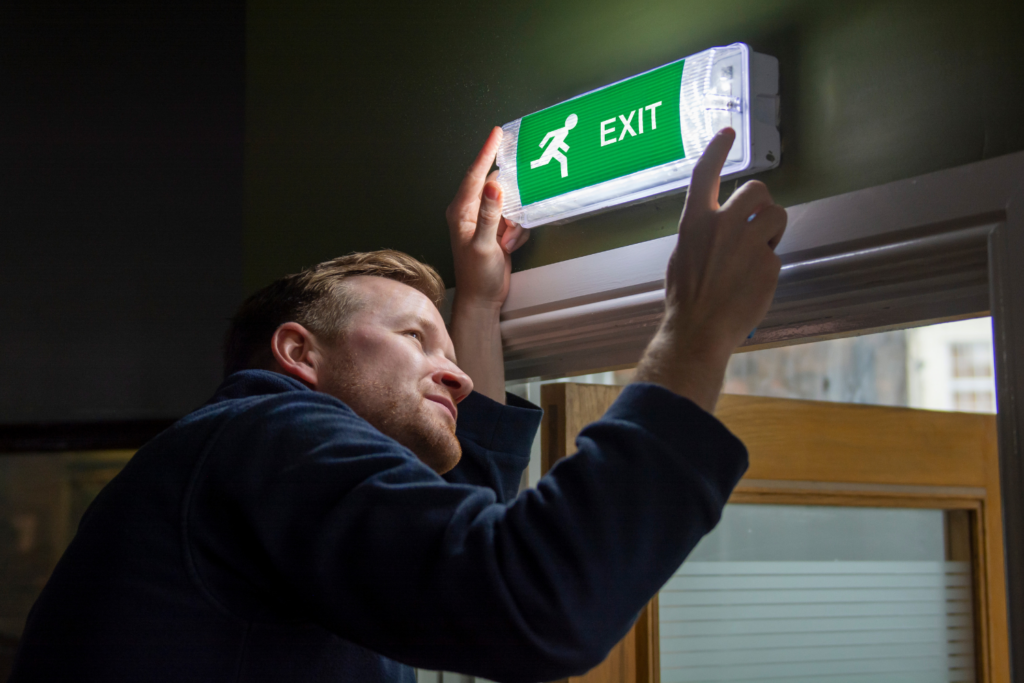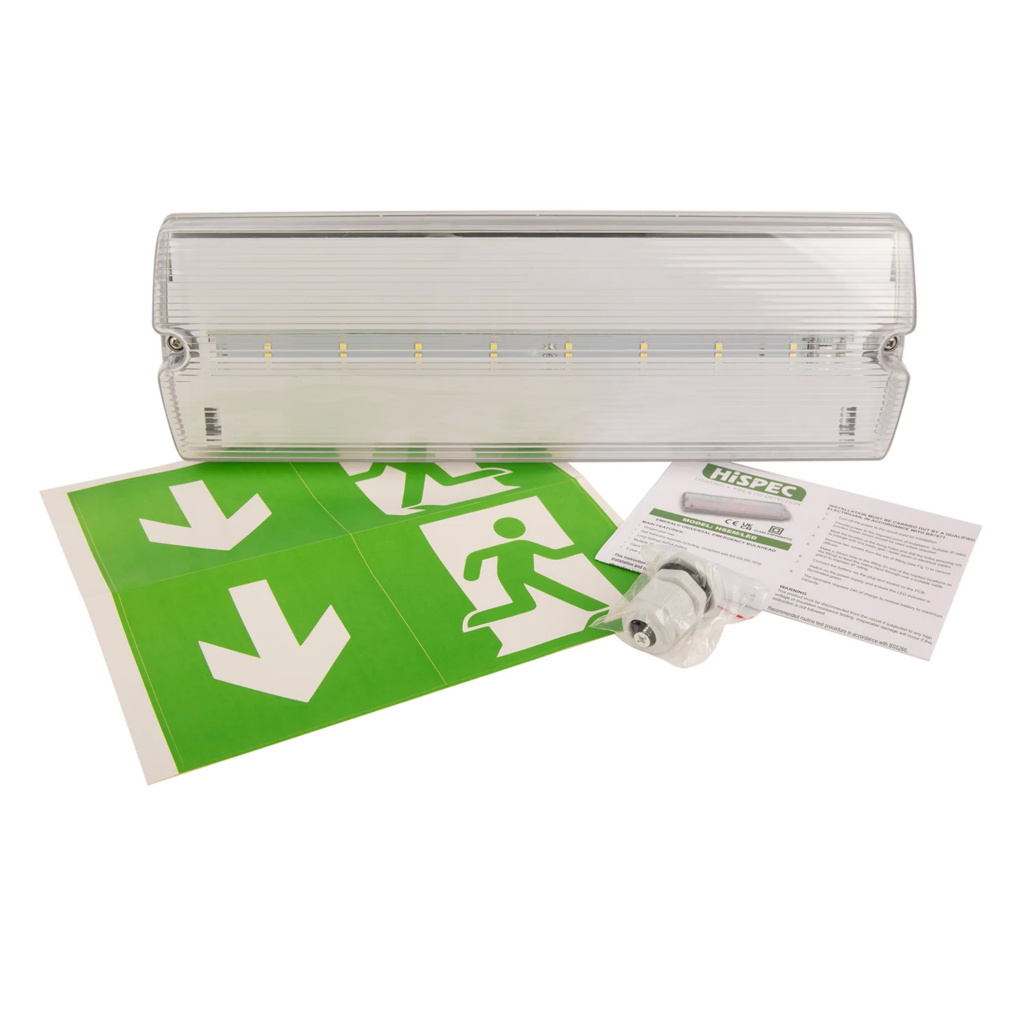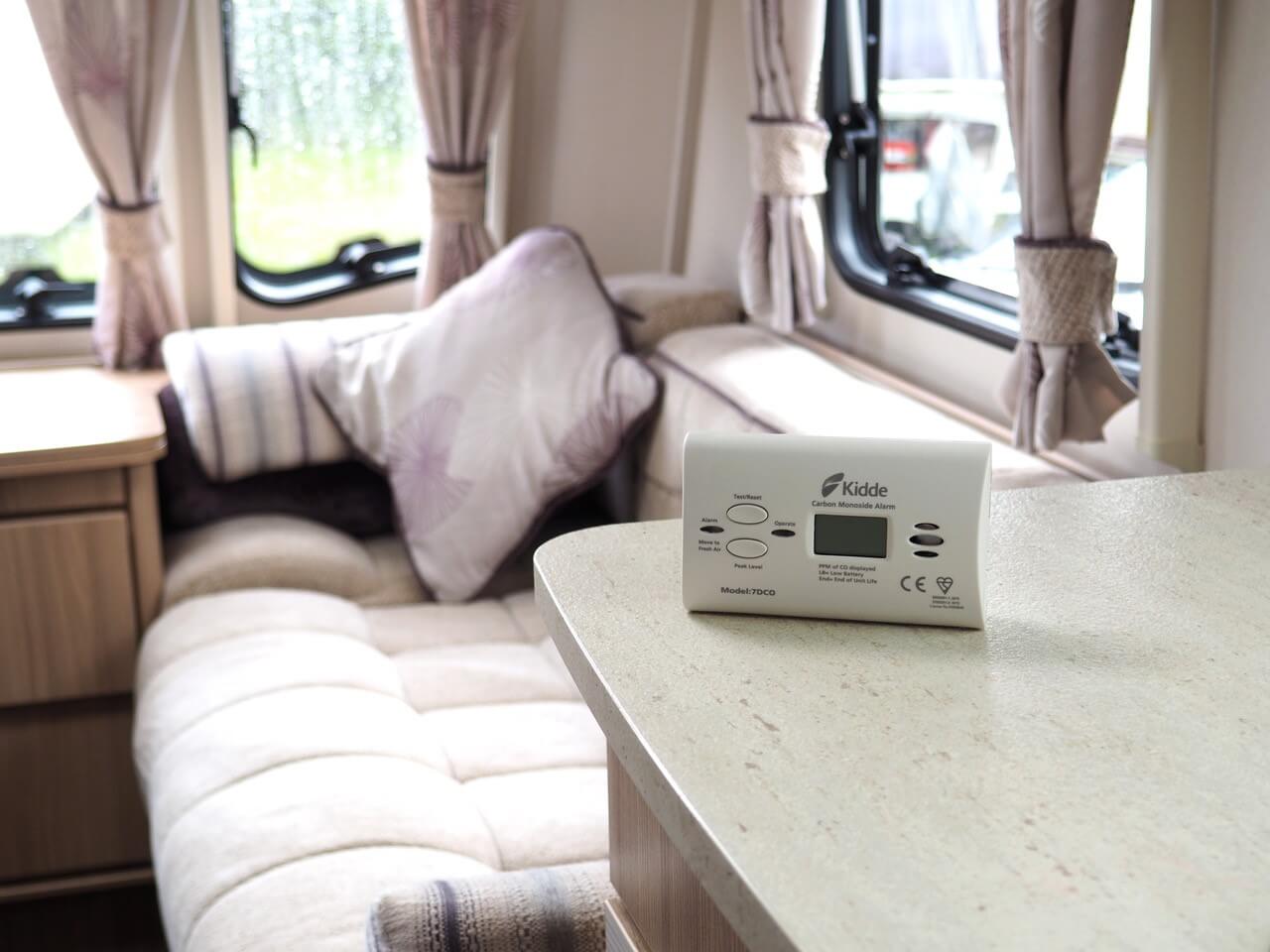Wednesday 1st October 2025
What Makes Emergency Lighting Testing Essential for Building Safety?
Testing emergency lighting systems forms the cornerstone of building safety compliance. These systems provide life-saving illumination during power failures, guiding occupants safely to exits. Without proper testing, luminaires may fail when needed most, creating dangerous evacuation conditions.
The Regulatory Reform (Fire Safety) Order 2005 mandates regular testing of emergency lighting systems. This legal framework places responsibility on the responsible person to ensure systems function correctly. BS 5266-1 sets out a process of testing frequencies and procedures that can be followed as guidance for ‘best practice’.
Emergency lighting failures often stem from battery deterioration, lamp burnout, or circuit faults. Regular testing identifies these issues before they compromise safety. Modern LED systems offer improved reliability, but ongoing testing remains crucial for ensuring compliance and maintaining peace of mind.
How Often Should You Test Emergency Lighting Systems?
Testing frequency depends on the type of test being conducted. Weekly visual inspections check for obvious faults, such as missing lamps or damaged fittings. Monthly functional tests verify that luminaires illuminate when mains power is interrupted. Annual duration tests ensure batteries maintain charge for the required period.
Weekly inspections take just minutes per floor. Inspect each luminaire for physical damage, missing components, and the status of the indicator lights. Record any defects immediately for repair. These quick checks prevent minor issues from escalating into major failures.
Monthly tests (otherwise known as a ‘flick test’) simulate power failures by interrupting the mains supply. Each luminaire should illuminate within five seconds and maintain adequate light levels. Test switches or key switches enable safe testing without affecting normal building operations. Document the results in the emergency lighting logbook.
Annual tests assess battery performance under extended load conditions. Systems must operate for their designated duration, typically one or three hours. This comprehensive test reveals battery degradation and identifies luminaires requiring replacement.

What Equipment Is Needed for Emergency Lighting Testing?
Basic testing equipment includes a log book, test key or switch, and light meter. The log book records all test results, defects, and remedial actions. Test keys enable the safe isolation of circuits without requiring access to electrical panels. Light meters measure illumination levels to verify compliance with minimum requirements.
Advanced testing equipment enhances efficiency and accuracy. Digital testing devices automatically record results and generate reports. These tools prove particularly valuable for large installations with hundreds of luminaires. Battery analysers assess individual battery condition and predict replacement needs.
Personal protective equipment ensures safe testing practices. Safety glasses protect eyes from debris when accessing ceiling-mounted fittings. Non-slip footwear prevents falls when using ladders or platforms. High-visibility clothing increases safety when testing in public areas.
Which Testing Procedures Ensure Accurate Results?
Systematic testing procedures guarantee comprehensive coverage and accurate results. Begin by visually inspecting all luminaires, checking for damage, missing components, or incorrect positioning. Record the location and condition of each fitting in the logbook.
Functional testing follows a logical sequence through the building. Start at the main distribution board and work systematically through each circuit. Activate the test facility and verify that all luminaires on the circuit illuminate correctly. Ensure that emergency exit signs remain visible and directional arrows are pointing correctly.
Duration testing requires careful planning to minimise disruption. Schedule tests during periods of low occupancy when possible. Monitor battery voltage and light output throughout the test period. Systems that fail to complete their full duration require immediate attention.
How Do You Troubleshoot Common Emergency Lighting Faults?
Lamp failure represents the most common emergency lighting fault. LED lamps rarely fail suddenly but may dim gradually over time. Replace failed lamps immediately and investigate underlying causes. Excessive heat, vibration, or voltage fluctuations may accelerate lamp degradation.
Battery problems manifest as short duration times or failure to illuminate. Check battery connections for corrosion or looseness. Measure battery voltage under load to assess capacity. Replace batteries that show a significant voltage drop or have exceeded their design life.
Circuit faults affect multiple luminaires simultaneously. Check the supply voltage at the distribution board and verify circuit protection devices. Inspect wiring for damage from building work or rodent activity. Use insulation resistance testing to identify earth faults or short circuits.
What Documentation Requirements Apply to Emergency Lighting Testing?
Comprehensive documentation proves compliance with legal requirements. The emergency lighting log book must record all tests, defects, and remedial actions. Include dates, times, and the identity of persons conducting tests. Photograph significant defects for insurance or legal purposes.
Test certificates verify system performance and compliance. Competent persons must sign certificates confirming that systems meet the required standards. Keep certificates readily available for inspection by enforcement authorities. Use our free online Fire Safety Log Book to record emergency lighting tests.
Maintenance records track system reliability and component replacement patterns. Record battery replacement dates, lamp changes, and circuit modifications. This historical data helps predict future maintenance needs and budget requirements.

How Can You Maintain Emergency Lighting Systems Between Tests?
Regular cleaning maintains optimal light output and appearance. Dust and dirt accumulation significantly reduce illumination levels. Clean diffusers and reflectors quarterly using appropriate cleaning materials. Avoid abrasive cleaners that may damage plastic components.
Environmental monitoring prevents premature component failure. Excessive temperatures accelerate battery degradation and lamp failure. Ensure adequate ventilation around luminaires and avoid positioning near heat sources. Monitor humidity levels in areas prone to dampness, where corrosion may occur. With regard to dust protection, some emergency lighting has an IP rating for dust and water resistance.
Proactive replacement strategies reduce unexpected failures. Replace batteries approaching their design life before they fail. Group replacements by installation date to reduce labour costs. Consider LED conversions when replacing older fluorescent systems.
What Are the Legal Consequences of Inadequate Emergency Lighting Testing?
Failure to test emergency lighting systems regularly carries serious legal consequences. The Fire Safety Order places personal responsibility on duty holders for compliance. Prosecution may result in unlimited fines and imprisonment for serious breaches of the law. Insurance claims may be rejected following fires where inadequate testing contributed to injuries.
Enforcement authorities expect robust testing procedures and comprehensive documentation. Fire and rescue services inspect records during routine visits. Health and Safety Executive investigations follow serious incidents. Criminal proceedings may arise where inadequate testing contributes to deaths or injuries.
Civil liability extends beyond criminal prosecution. Employers face compensation claims from injured employees or visitors. Property owners may face legal action from tenants or neighbouring properties. Professional indemnity insurance requires compliance with recognised testing standards.
How Do Modern Emergency Lighting Systems Simplify Testing?
Advanced emergency lighting systems incorporate self-testing capabilities. These intelligent systems automatically conduct monthly and annual tests without manual intervention. Central monitoring panels display system status and alert maintenance teams to faults. Wireless communication enables remote monitoring from security offices.
LED technology offers significant advantages over traditional systems. LEDs provide consistent light output throughout their service life. Battery drain is reduced significantly, extending the backup duration. Solid-state construction eliminates lamp replacement requirements.
Smart building integration connects emergency lighting to fire alarm systems. Automatic testing coordinates with fire alarm maintenance schedules. Addressable systems instantly identify specific luminaire faults. Cloud-based monitoring enables remote system management and predictive maintenance, allowing for proactive maintenance and improved system uptime.
Expert Testing Services from Safelincs
Our qualified engineers provide comprehensive emergency lighting testing services across the mainland UK. We combine technical expertise with award-winning customer service to ensure your systems meet all legal requirements. Contact our team today to discuss your testing needs and maintain compliance with confidence.
All information correct at time of posting.



